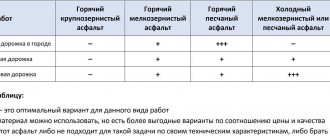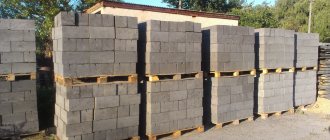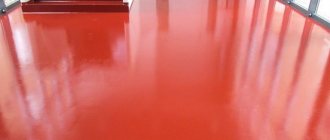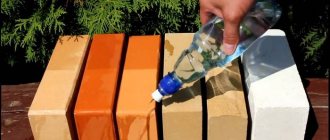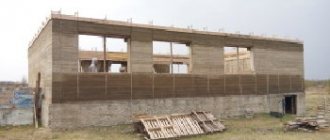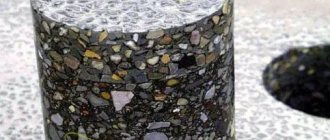Classification of asphalt concrete. Type of filler and brand
There are quite a large number of methods and technologies for the production of asphalt concrete mixtures. The properties of the resulting product are influenced by both the characteristics of the material and the manufacturing methods used, which differ depending on the manufacturer.
Main types of asphalt
Depending on the mineral mixtures included in the composition:
- Crushed stone.
- Gravel.
- Sandy.
Depending on the mineral grains:
- Coarse-grained.
- Fine-grained.
- Sandy.
Depending on the residual porosity:
- High density.
- Dense.
- Porous.
- Highly porous.
Depending on bitumen:
- Hot.
- Cold.
Sale of asphalt:
With delivery to St. Petersburg and Leningrad region
Characteristics
Basic properties:
- Temperature: cold mixture (40 degrees), hot mixture (at least 120).
- Fraction (size) – about 4-6 mm.
- Density. It is calculated according to the characteristics of residual porosity, that is, dense is 1-2.5%, compacted from 2.5 to 5%, cellular 5-10%, porous from 10 to 20%.
Sandy asphalt concrete is quite simple to produce, however, accordingly, the quality and strength are much lower than that of similar types of asphalt, where some other mineral is additionally present.
Advice. The minimum permissible thickness of any type of asphalt concrete layer, including sand, should not be less than 4 cm.
Characteristics of asphalt concrete pavement
- 1. Asphalt concrete must contain sand, bitumen (a solid or resin-like substance) from 2 to 9%, as well as various minerals.
- 2. It is possible to contain a stone fraction, but its presence is not necessary. But, despite this, many asphalt concrete pavements are made on the basis of crushed stone.
- 3. The composition of the future asphalt concrete pavement also includes various additives. The main function of additives is to ensure wheel adhesion to asphalt concrete and increase roughness.
Porous coarse asphalt
Prices for sand asphalt
(prices valid from 09/15/2021)
| № | Type of asphalt concrete mixture (asphalt) | Price, rub (incl. VAT 20%) |
| 1 | Sand asphalt concrete mixture type D, grade 2 | 3 450,00 |
| 2 | Sand asphalt concrete mixture type D, grade 3 | 3 450,00 |
| 3 | Sand asphalt concrete mixture type G, grade 1 | 4 200,00 |
| 4 | Asphalt concrete mixture sand type D grade 2 with the addition of 20% crushed stone | 3 400,00 |
Asphalt concrete grades
The concept of “brand” of asphalt concrete is quite broad. The main requirement for all brands of asphalt concrete pavements is that the materials used in production must comply with GOST 9128 - 2013.
The complexity of the process lies in the fact that a large number of physical and chemical factors are used to determine the brand. The parameters differ for different components of asphalt concrete mixtures.
For example, high-density asphalt concrete made from rocks contains higher and higher quality indicators than asphalt concrete pavement made from crushed stone. But despite the difference in the resulting quality, the materials taken belong to grade I, but differ only in density and resistance to various types of influences.
High-density asphalt concrete made from rocks contains higher and better quality indicators than asphalt concrete pavement made from crushed stone. But despite the difference in the resulting quality, the materials taken belong to grade I, but differ only in density and resistance to various types of influences...
The grade of asphalt concrete divides the materials used into:
- 1. Having high performance for stone and bitumen.
- 2. Materials with average parameters. Basically, such materials are suitable for construction work of all types.
- 3. Materials that cannot be used in harsh climates or under increased load.
Read also:
Advantageous means of combating ice
Types of stamps
Cast asphalt
There are three main grades in the production of asphalt concrete:
- Number I.
- Number II.
- Number III.
The first brand includes a fairly large amount of road materials. This includes high-density and highly porous materials. This coating is made on the basis of gravel and sand. These mixtures show high quality, developed for special conditions. The composition contains bitumen, quartz sand, and rocks. Asphalt concrete coating of this brand is quite widely used in construction work. Grade I guarantees high quality coating.
This grade contains high-density, porous sand types. Compared to the first brand, the coating of the second brand is distinguished by its ability to withstand various climatic conditions and loads. These parameters for the second brand are slightly lower. But despite this, the second grade is more common than grade I asphalt. The coating is used in the construction of city streets and most roads.
This brand does not contain crushed stone, but contains minerals. The density of this brand is at a relatively high level, but the strength is significantly lower compared to stone-based coatings. This coating is used for the construction of roads that do not require heavy loads. It is also used for “pothole repair”.
Cold asphalt
Main types of asphalt concrete
There are several classifications, which are based not on one parameter, but on a set of characteristics:
- By filler type (composition);
- According to the manufacturing and laying temperature;
- By porosity;
- By grain size;
- Type;
- By brand.
All of the above criteria affect the properties of the material, as well as the scope of its application. Even within the framework of asphalting one area, because during laying several types of asphalt concrete are often used.
By composition
Depending on the type of aggregate, there are three types of asphalt concrete mixtures:
- Sandy The optimal solution for areas with light traffic loads. Usually these are pedestrian areas, courtyards, sidewalks. Sand has low performance characteristics and is cheap.
- Gravel is practically not used, since it is replaced by a crushed stone analogue. Previously, it was often used when laying roads and pedestrian areas, since it has improved technical characteristics. However, its strength is not enough for roads of categories I and II.
- Crushed stone High-quality coating, which is designed for heavy transport loads. Suitable for asphalting any roads, as well as the construction of airfields. It can be used to create pedestrian zones, but this is unprofitable from an economic point of view. Depending on the composition, it can be crushed stone, crushed stone-mastic. In the first case, the composition includes crushed stone from hard rocks, which serves as the frame of the coating. In the second case, crushed stone comes complete with fibrous additives, for example, cellulose fibers.
By asphalt type and characteristics
The technical characteristics and scope of asphalt concrete are determined not only by the filler, but also by its quantity. Therefore, there is a classification of mixtures by type:
- Type A contains 55–65% stone. These are high-grain mixtures. Usually laid using the hot method.
- Type B contains less stone - 45–55%. Such mixtures can be used for both hot and cold styling. In the latter case, the package will be marked “X”.
- Type B contains only 35–45% stone. It is also considered universal for cold and hot styling methods.
- Type G includes a large amount of sand obtained by crushing rocks and sifting. Demonstrates high wear resistance, but low strength.
- Type D is created by crushing rocks and belongs to the category of sand materials.
The type affects not only the scope of use, but also the final price of construction work.
According to installation temperature
Another classification is based on laying technology and composition. According to it, all asphalt concrete mixtures are divided into three groups:
- Hot method
The main technology for paving roads with high and medium traffic loads. The reason for its popularity is that the method is quite cheap, and the coating is durable. According to SNiP, the mixture is heated to 120–130 degrees so that when laying its temperature does not fall below 100 degrees. In this case, the air temperature must be at least 5%, and the weather must be dry. Laying stages:- The bitumen is heated in a separate container and then poured into the mixer, where the remaining components are already located: crushed stone, sand, mineral powder. The mixer rotates constantly as it travels to the paving site.
- Asphalt is unloaded onto the prepared base and evenly distributed over the surface. Often a paver is used for this purpose. The layer thickness is 5 cm.
- The layer is carefully compacted with a vibrating roller or hand tools when the area is small. If it is necessary to strengthen the surface, a second layer of asphalt is laid, usually 5 cm thick, which is carefully compacted. A geogrid can be laid between the layers, and impregnation with bitumen emulsion is carried out to increase the adhesion of materials.
- Cold method
It is used for patching all year round, as well as for paving small areas and driveways with light traffic loads. There is no need to warm up before installation, as the bitumen is liquefied with a solvent. This approach allows work to be carried out even in slight frost. Installation stages:- Large debris is removed.
Use a grinder or road saw to trim the edges of the hole. It is better to cut at an angle of 90 degrees.
- Asphalt scraps, dust, and sand are removed. Dust removal can be done using water. A small amount of liquid at the bottom is allowed.
- If the hole is too deep, crushed stone is filled in to reduce the consumption of asphalt chips.
- The walls are impregnated with bitumen to enhance the adhesion of the old coating to the new patch.
- The prepared mixture of cold asphalt is poured. The layer thickness is 5 mm + 1 mm for compaction.
- Tamping is carried out manually or using a vibrating plate. It is normal if after compaction the patch protrudes slightly above the road level. Over time, it will become level with the road.
- The patch is sprinkled with sand on top to prevent car wheels from sticking and damaging the patch.
- Mold Asphalt A type of hot asphalt that does not require compaction. Thanks to its composition, it has improved physical and mechanical characteristics. It is a liquid substance that becomes strong and hard when dried. Residual porosity remains within 2%. When laying it, it needs to be heated to 190–230 degrees.
For reference!Cast asphalt is not widely used in Russia because it has an expensive and complex production technology. The amount of bitumen is more than 10% of the total volume, the amount of mineral powder is about 20-30%. Sand and crushed stone are selected of high quality. The plasticity of the mixture is provided by polymers. In addition, complex equipment is used for installation, which must heat the substance to 200 degrees. A prerequisite for work is dry and warm weather.
The disadvantage is that this type of asphalt concrete mixtures cannot be used to cover large areas or roads with high traffic loads. After laying, the layer must be compacted well.
By degree of porosity
Let's figure out what kind of asphalt there is in terms of residual porosity:
- High density - 1–2.5%.
- Dense - 2.5–5%.
- Porous - 5–10%.
- Highly porous - 10–18%.
Typically, highly porous mixtures are used to create a lower layer to increase resistance to stress. But in this case, the top layer is created from dense or high-density mixtures in order to achieve the required degree of strength.
By grain size
The size of the material fractions is no less important. Crushed stone can be broken into small and large pieces, and sand is automatically fine-grained.
- Sand The diameter of the fractions reaches 10 mm. To obtain such a mixture, you need to add sand as one of the aggregates. However, in this case the technical
- Fine-grained The diameter of the fractions will be larger - up to 20 mm. You can get such a mixture by crushing crushed stone or gravel. The latter will provide improved technical characteristics. Typically this option is used to create a top layer of asphalt. It is laid on a layer of coarse-grained mixture to achieve high density. Fine fractions successfully fill the resulting voids. Fine-grained mixtures are highly durable, but are susceptible to rutting. However, the problem can be solved with the help of high-quality compounds.
- Coarse-grained
The maximum diameter of fractions reaches 40 mm. This mixture is made from gravel or crushed stone and is used to lay the lower stabilizing layer. It must be supplemented with a top layer of fine-grained asphalt.
By brand
Each brand of concrete includes materials with different characteristics. Therefore, the type and brand of road asphalt concrete mixtures must be selected for a specific task.
- Brand 1 This category includes different mixtures that share one key property - high strength. The composition necessarily contains crushed stone, quartz sand, bitumen, and mineral powders. The mixtures are recommended for forming the bottom layer of asphalt concrete. Such compositions are the most expensive.
- Brand 2 Combines materials that are slightly lower in technical characteristics than analogues of Brand 1. It is cheaper and can be used to solve any problems. For example, for construction, repair of roads with heavy traffic loads, asphalting of private areas, parks and squares.
- Grade 3 Dense but low-strength asphalt concrete with crushed stone in its composition. Usually made on the basis of sand and mineral powders. Suitable for repairing roads, laying surfaces with low traffic loads: sidewalks, pedestrian areas, alleys, areas near houses, as well as public institutions. Often used when pothole repair of roads and sites is required.
The ratio of types and brands of asphalt concrete mixtures looks like this:
| Brand | Compound | Type |
| 1 | Sand/screenings, crushed stone, mineral powder, bitumen | Dense mixtures A, B, D; highly porous, porous, high-density |
| 2 | Sand/screenings, crushed stone, mineral powder, bitumen | Dense mixtures A, B, C, D, D, porous, highly porous |
| 3 | Sand/crushing screenings, mineral powder, bitumen | Dense mixtures B, C, D, D |
Types of Asphalt Concrete Used
The basic properties of an asphalt concrete pavement depend both on the volume of filler and on its characteristics. The first three types include crushed stone and gravel. The remaining two types contain a large amount of sand.
There is the following division of asphalt concrete by type:
- Type A - 55 - 65% stone in the coating composition. Type A mixtures are used only hot. They differ only in grain size.
- Type B - contains 45 - 55% stone. The mixture can be used both hot and cold. The designation for this type uses the letter “x”, which means the mixture is used cold.
- Type B - the percentage of stone varies from 35 to 45. The coating is made using both cold and hot mixtures.
- Type G - during the manufacturing process, the composition includes only sand, extracted through screening, as a result of crushing rocks. The material is quite wear-resistant.
- Type D - the mixture for this coating is obtained by crushing rocks.
All asphalt concrete pavements vary in cost and have different applications, depending on the type, brand, and characteristics of the material used.
Application area
Such mixtures are most often used for arrangement:
- coverings of shopping areas;
- play areas, pedestrian paths, bike paths;
- indoor floors;
- adjacent areas, access roads to gates, plots, etc.
Such a wide range of applications is due to the fact that such material is relatively simple to manufacture, and accordingly its cost is much lower. Moreover, such asphalt can compete even with paving slabs, paving stones and others.

